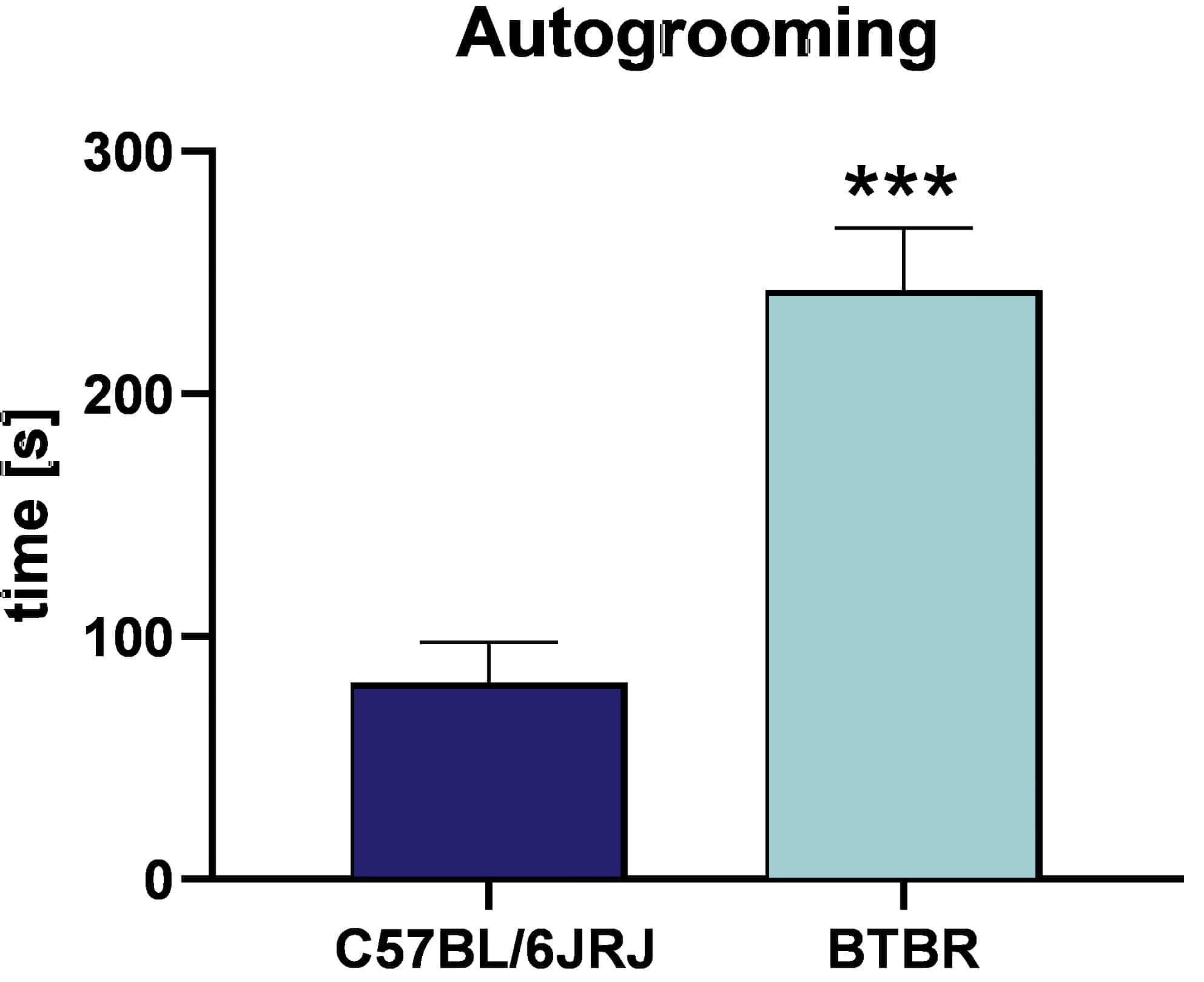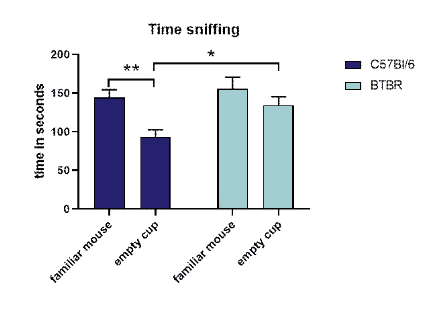Autism spectrum disorders (ASD) are a group of complex neurodevelopmental conditions affecting more than 1.5 % of the global population. Lifelong core behavioral abnormalities observed in ASD individuals are social deficits and repetitive behaviors with restricted interests. So far, no FDA-approved compound exists which can ameliorate all core symptoms.
BTBR T+Itpr3tf/J (BTBR) mice are an inbred strain presenting a severely reduced hippocampal commissure and complete agenesis of the corpus callosum. BTBR mice are the most widely used model for ASD research and related test substance analyses. Various pharmacological agents of different classes are already positively tested for their efficacy in the BTBR model. Published examples are the acetylcholinesterase inhibitor donepezil, the noradrenergic reuptake inhibitor atomoxetine and the partial glycine site agonist D-cycloserine, targeting the NMDA receptor.
The most important behavioral changes observed in BTBR mice are:
- Severe repetitive behavior of autogrooming
- Increased anxiety-like behavior
- Social deficits
Analysis of autogrooming behavior in BTBR mice shows a significant increase of the total grooming time compared to C57BL/6RJ mice (Fig. 1).

Figure 1: Autogrooming behavior in male BTBR and C57BL/6RJ mice. Total grooming time in seconds of BTBR mice at the age of 10 weeks compared to C57BL/6RJ mice. n = 15 per group. Mean + SEM Unpaired t-test; ***p<0.001.
Additionally, BTBR mice were analyzed in the three-chamber social interaction test, showing that mice have severe deficits in social approach as presented by an increased time BTBR mice spend sniffing at the empty cup (Fig. 2).

Figure 2: Social behavior of male BTBR mice in the three-chamber social interaction test. Time BTBR mice spent sniffing on an unfamiliar mouse or an empty cup as measure of social approach at the age of 2 months compared to C57BL/6 mice in the three-chamber social interaction test. BTBR: n = 15; C57BL/6: n = 14. Two-way ANOVA with Bonferroni´s post hoc test.
Our results show that BTBR mice display the core ASD symptoms of repetitive behavior and social deficits and are thus a valuable model for ASD research.
Scantox offers a custom-tailored study design for BTBR mice, and we are flexible to accommodate to your special interests. We are also happy to advice you and propose study designs. Animals will be purchased right after your order. BTBR mice show relevant features of ASD already at young age. This allows for extraordinarily fast processing times. Furthermore, C57BL/6 mice are available as control animals needed for proper study design.
We are happy to evaluate the efficacy of your compound in the BTBR mouse model! The most common readouts are:
- Social approach and recognition
- Learning and anxiety
- Repetitive behavior
- Activity and hyperactivity
- Motor dysfunction
You might be also interested in these related topics:
As with other in vivo models, we are also ready to provide samples (brain tissue, CSF etc.) from BTBR mice for analyses in your laboratory.
